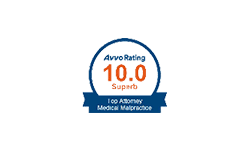Typically, the more severe the car accident, the worse the injuries. In a high-speed collision on the interstate, a crash victim may have broken bones, traumatic brain injuries, or spinal cord injuries. It’s important to remember, however, that any accident has the potential to result in injury. For example, whiplash can occur in nearly any accident situation. Speed may play a role in the severity of the injury, but the force from even a low-speed accident can result in neck strain. In order to understand why this is, let’s take a look at why whiplash happens.
The Physics Behind Whiplash
You’ve heard the phrase “every action has an equal and opposite reaction.” This theory applies to whiplash. When two objects, in this case a vehicle and the vehicle’s occupant, exert force on each other, like in a car accident, the forces are equal but occur in the opposite direction. To understand why the force damages a person’s neck, you first need to understand the human structure.
The spinal cord is made up of 33 vertebrae stacked together. Those vertebrae are connected with tissue called ligaments. Tendons connect the vertebra to surrounding muscles. Those bones provide protection for the spinal cord and stability. In the event of a car accident, neck strain can occur. The sudden force stretches and tears the tendons and muscles in your neck.
A whiplash injury is sustained in less than a second. In the event of any impact, the following sequence of events takes place:
- The occupant remains stationary when the impact first occurs.
- Within the first 100 milliseconds, the occupant’s torso moves forward with the vehicle’s seats and begins to spring back.
- 150 milliseconds after impact, the lower neck is pulled forward by the lower back. The neck rotates and extends, which is referred to as hyperextending.
- In the following 25 milliseconds, the head continues to move backward while the torso moves forward.
- The final 125 milliseconds after impact involve and head and torso propelling forward. The neck whips forward, rotating and hyper-flexing.
The upper seven vertebrae, which connect the head to the spinal column, are generally the most affected by a whiplash injury.
Whiplash and Low-Speed Accidents
Contrary to what many insurance companies refuse to believe, according to the National Center for Biotechnology Information (NCBI), whiplash is a very real possibility in low-speed accidents.
For example, say you’re stopped at a red light when a vehicle unexpectedly rear-ends you. Even if there’s little damage to the vehicles and other driver wasn’t speeding or was braking and only traveling five to 10 mph, the passenger can still sustain a whiplash injury. This is because regardless of the speed the accident takes place, the occupants still absorb the force of the crash—which is a lot for any body to take. It’s also estimated that in a rear-end crash, where whiplash is one of the more common injuries, the force coming from the colliding vehicle is amplified by the time it reaches the heads of the occupants upfront.
Determining the Severity of Whiplash
If you’ve been in a low-speed crash and sustained a whiplash injury, it could take hours or even days for symptoms to develop. Following any type of crash, it’s important to seek medical attention. Even mild whiplash can be debilitating. Your doctor will be able to conduct a full assessment and determine how your injuries could develop and heal.
The examination may consist of checking your range of motion and looking for areas of tenderness. Depending on your symptoms, they may be able to diagnose you without much further testing. Common symptoms of whiplash include pain or stiffness in the neck, numbness or tingling in your shoulders, arms, or legs, or localized weakness in your limbs. If their diagnosis is inconclusive, they may order an X-ray, CT scan, or MRI.
The Importance of Seeking Legal Support
Unlike a broken bone or severe cut, whiplash isn’t visible. Nonvisible injuries are sometimes harder to seek compensation for than those that require bandages or casts. If your insurance company is denying you the money you deserve for your car accident, our lawyers can help.
At Shrager, Sachs, & Blanco, our attorneys understand how challenging it can be to manage a car accident claim while trying to focus on recovering physically, mentally, and financially. That’s why we offer our services to auto crash victims. If you’ve been in a collision that resulted from someone else’s negligence, our attorneys can evaluate your situation and build a claim that proves your accident never should have happened. To learn more about the benefits of hiring legal representation, contact our office today.









